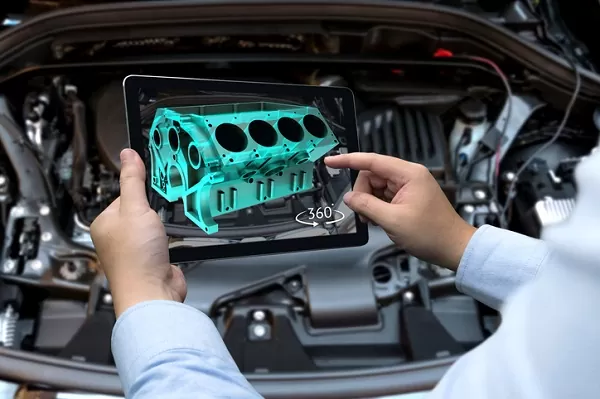There are many reasons why proper tire inflation is important. Firstly, underinflated tires affect greatly vehicle safety, since they lower traction and make the vehicle skid, especially when the weather is unfavorable. It’s critical to ensure that your tires are properly inflated to keep you safe and decrease the risk of getting injured. If you are injured due to the negligence of another driver that didn’t take the proper safety precautions before driving, contact a personal injury attorney in New Jersey.
What Are The Dangers of Underinflated Tires?
Inconsistent vehicle maintenance can have a variety of negative effects, including putting your safety at risk. Below I’ve listed some of the potential consequences of having underinflated tires:
- Car Sway: Having a softer tire due to underinflation can actually cause your car to sway one way or another. This can increase the risk of a rollover or an accidental car crash.
- Reduced Steering Capability: Your car becomes less smooth and level, affecting your steering efficiency. A sudden drop in tire pressure can also result in diminished traction and reduced vehicle control overall.
- Poor Fuel Efficiency: Poor fuel efficiency can contribute to increased rolling resistance, meaning that your car experiences more resistance from the road, resulting in reduced miles per gallon (MPG). This will reduce fuel economy, requiring more frequent refueling and increasing fuel costs over time.
- Tire Wear and Tear: Uneven tread wear can affect the performance of your tread and reduce the lifespan of your tires. Early tire replacement is necessary, which can be expensive.
- Increased Stopping Distance: Your break efficiency will decrease and the farther you stop, the harder it will be for your car to stop safely.
- Tire Blowouts: Excess heat will build up causing structural damage to the tire. Once the structural integrity of the tire is compromised, it is more susceptible to blowout.
- Reduced Traction: Decreased grip ability for your tires can occur, especially in adverse weather and road conditions. This creates an increased chance of slipping in wet and slippery conditions and increases the risk of a car accident due to lack of control.
Clearly, underinflated tires can create a lot of problems that lie beneath the surface. It’s best to be aware of these potential complications in order to avoid them altogether.
Safety and Legal Implications of Poor Tire Inflation
Underinflated tires have a huge risk of compromised road safety. There is an increase in car accident risk because the under-inflated tires can compromise stability, making it more difficult to control the vehicle, especially in emergency situations or in poor road conditions.
In addition to the safety risks, there are also potential legal ramifications for driving with underinflated tires.
- Driving Penalties: Many states impose fines and penalties for driving with low-inflation tires, as it is considered a safety violation. For instance, New Jersey has tire regulations that result in $100 to $500 penalties.
- Potential Liability in an Accident: In the event of an accident, if an under-inflated tire is found to be the cause, the driver could face legal liability, which could have legal consequences and a financial burden grade.
- Maintenance Violations: The Federal Motor Carrier Safety Administration has instilled many vehicle maintenance violations that include flat tires, underinflated tires, tire sidewall separation, improper tread depth, and more. Tires violations make up 11% of FMCSA violations and typically carry the heaviest penalties.
In summary, maintaining a very high level of tire pressure is important for road safety, as it reduces the risk of accidents, minimizes legal repercussions and helps manage the costs associated with vehicle ownership.
Preventative Measures You Can Take To Ensure Road Safety
There are many preventative measures you can take to prevent these consequences from happening and to ensure the road safety of you and others.
- Regular Tire Pressure Checks: Make sure to follow the manufacturer’s recommendations for proper tire pressure to maintain safe handling. You can also use a tire pressure gauge to check your tire pressure regularly and adjust as necessary to maintain recommended levels. You can do this at your local gas station.
- Monitor Your System: Use a modern tire pressure monitoring system (TPMS) to get real-time information about your tire pressure. This will provide alerts that you can respond to promptly, as the will typically alert you for underinflated or overinflated tires. This will help prevent accidents and prolong tire life.
- Consistent Maintenance and Inspection: You can always manually check your tires for any signs of wear, tear, or displacement. If you notice anything off, you can take it to a local tire shop to get it checked out by a professional.
- Education and Awareness: Educating drivers on the dangers of inadequately inflated tires, emphasizing the increased risk of accidents, reduced handling, and other potential road injuries can be one of the greatest safety measures you can take. Always promote safe tire maintenance practices and raise awareness to promote road safety.
So, Why Keep Your Tires Properly Inflated?
Ultimately, proper tire inflation promotes safe driving and highlights the critical role tire pressure plays in overall vehicle safety, benefiting not only the driver but other road users also. Good tire pressure is key for vehicle safety, and it encourages safety, cost-effectiveness, and responsible driving. So next time you sense that your tire pressure is getting low, get it checked out before it’s too late!







